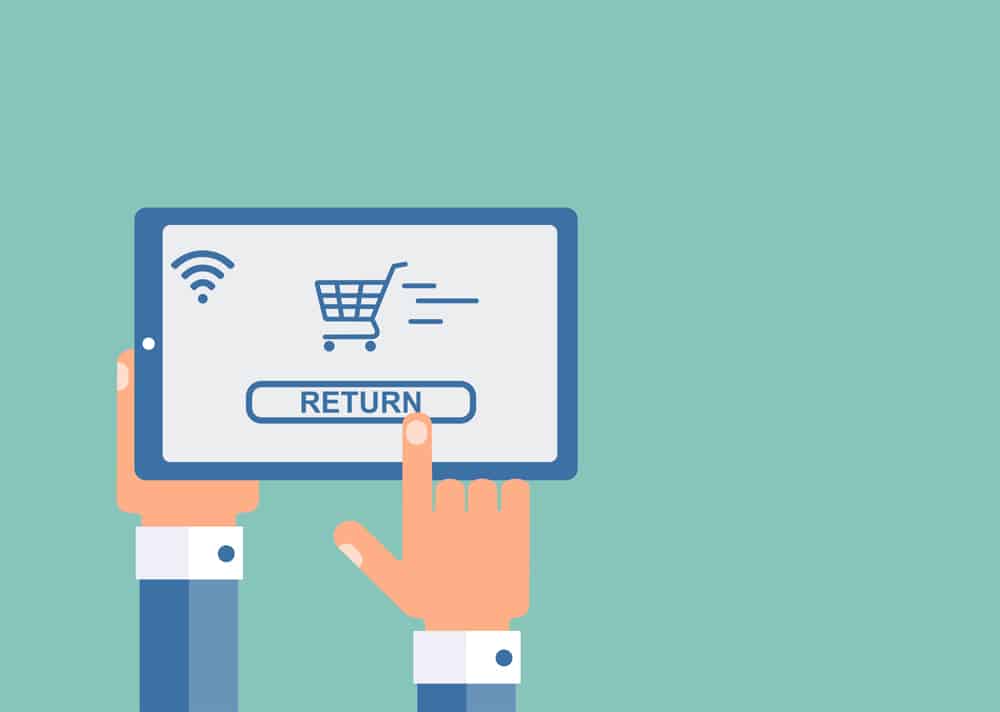Why Returns Management is More Important than Ever in 2021

In case you haven’t heard, things have changed in the retail sales market in the last year or so due to a certain public health emergency. If you’re a business that sells items to consumers online (or recently started doing so because of said changes), there are going to be lasting impacts in your returns management as a result of COVID and the shift in shopping patterns worldwide. It’s important to understand what those impacts will be, and how you can continue to improve your processes to ensure that your customers get what they expect and your bottom line remains profitable.
Ecommerce and Returns in the U.S.
Consumers have increasingly warmed to the idea of online shopping, but that trend accelerated sharply in 2020 when many people did not have the option (or desire) to go into a store for in-person shopping. Consumers spent more than $860 billion online in 2020, a 44% jump over the prior year, pushing online sales to more than 21% of total retail sales.
That’s great news for retailers with the capability to sell products online, but it also comes with a caveat: the more people shop online, the more they are going to return. Reverse logistics for ecommerce—processing returns for online purchases and issuing refunds or exchanges—is an increasingly vital part of any retail operation.
Returns have always been a part of the ecommerce process. The rate of returns has also far exceeded that of in-person shopping, averaging anywhere from 15 to 40% for online purchases (depending on the industry and product type), compared to just 5 to 10% for in-store purchases. As many as 41% of shoppers deliberately purchase more than they need online with the intention of returning item(s) they don’t like or don’t want. The most commonly returned items, in order, are:
- Clothing (21%)
- Shoes (12%)
- Electronics (8%)
- Bags and accessories (6%)
- Books, movies, and music (5%)
- Cosmetics (5%)
- Household appliances (5%)
For retailers, these are more than just numbers. They represent significant costs to your business that can harm your bottom line with the added expenses of:
- Labor to process returns, refunds, and exchanges
- Warehouse costs to store and manage returns
- Shipping costs to get items back to your facilities (and ship out new items if necessary)
- Repair costs for faulty items
- Disposal costs for items that are damaged or cannot be resold
- Resale costs related to repackaging, refurbishing, and getting items back on the shelf (or website)
Most companies have invested heavily in forward logistics to create efficient distribution channels and maximize profits. The next evolution for online sales is to spend the same amount of time and energy maximizing efficiency in your reverse logistics process.
How Retailers Can Move Forward in 2021
Ignoring increased ecommerce returns is certainly not a solution. Consumers will continue to return items, and without the right tools and processes in place your business will experience the financial repercussions with reduced margins and low profitability. Eliminating the option for returns isn’t viable either. Consumers today expect returns to be easy and inexpensive. In fact, consumers have indicated that a lack of return options will definitely make them think twice about shopping with an online retailer. Costly or cumbersome returns processes will also push shoppers away from your site to your competitors.
Returns transparency and simplicity top the charts when it comes to consumer preferences, something that is only going to increase as people get more comfortable with online shopping. Shopify found that 72% of shoppers are willing to spend more on an order and are more likely to shop with a retailer again if they have a customer-friendly returns policy.
So how can retailers offer convenient and flexible returns without losing a lot of money? There are some important steps you must take.
1: Start with the right reverse logistics tools
As with many aspects of your business operations, the most important thing you can do is have the right tools to help you manage your reverse logistics process. Cloud-based software-as-a-service (SaaS) reverse logistics platforms provide an overview of your entire returns process, and help your team stay on the same page to process returns efficiently and effectively.
2: Make data-driven decisions
Having the right information helps you make sound business decisions, and that is as true in reverse logistics as it is elsewhere in your business. Reverse logistics software provides the data you need to analyze your current returns, find inefficiencies and opportunities for savings, and minimize losses. Insights into return patterns can also help you make changes to your sales and operations.
For example, if you have a product with very high return volumes you can collect data on the reasons for the returns. Using that information you can update your online listing with more accurate information, change the price, or make other adjustments to increase customer satisfaction and minimize returns.
3: Communicate your policies with customers (and internal team members)
Clear, concise returns policies help your customers understand what is allowed, and help your team manage legitimate returns effectively while reducing the chance for fraud. Reverse logistics software can also help you keep in touch with customers throughout the returns process with automated messages and updates.
4: Find ways to turn returns into profit opportunities
Returns are not going away, so companies that embrace the opportunity to find ways to minimize the need for returns while limiting the financial impact will be the businesses that thrive in the future.
Find out more about how you can improve your reverse logistics and be ready for a post-COVID online retail future with ReverseLogix. Schedule your demo today.
